Keeping a baby safe while they sleep is a top priority for any parent. One common concern is How to Keep Babys Legs from Getting Stuck in a Crib. While it may seem like a minor issue, it can lead to serious injuries if not addressed properly. In this article, we will explore different ways to keep a baby’s legs from getting stuck in a crib, as well as the importance of crib safety in general.
Understanding the risks associated with crib safety is essential for parents. The American Academy of Pediatrics recommends that infants sleep in a safe crib or bassinet, free of any loose bedding, toys, or other items that could pose a suffocation hazard. Additionally, parents should regularly check their crib for any damage or wear and tear that could increase the risk of injury. By taking these precautions, parents can help ensure their baby’s safety while they sleep.
Key Takeaways
- Crib safety is a top priority for parents to ensure their baby’s safety while they sleep.
- The American Academy of Pediatrics recommends safe sleep practices, including using a crib or bassinet free of any loose bedding or toys.
- Regularly checking for any damage or wear and tear can also help reduce the risk of injury.
Understanding the Risks
When it comes to keeping a baby safe in their crib, it’s important to understand the potential risks. Crib-related injuries and infant deaths can occur due to suffocation, strangulation, and sudden infant death syndrome (SIDS). By being aware of these risks, parents can take steps to prevent them.
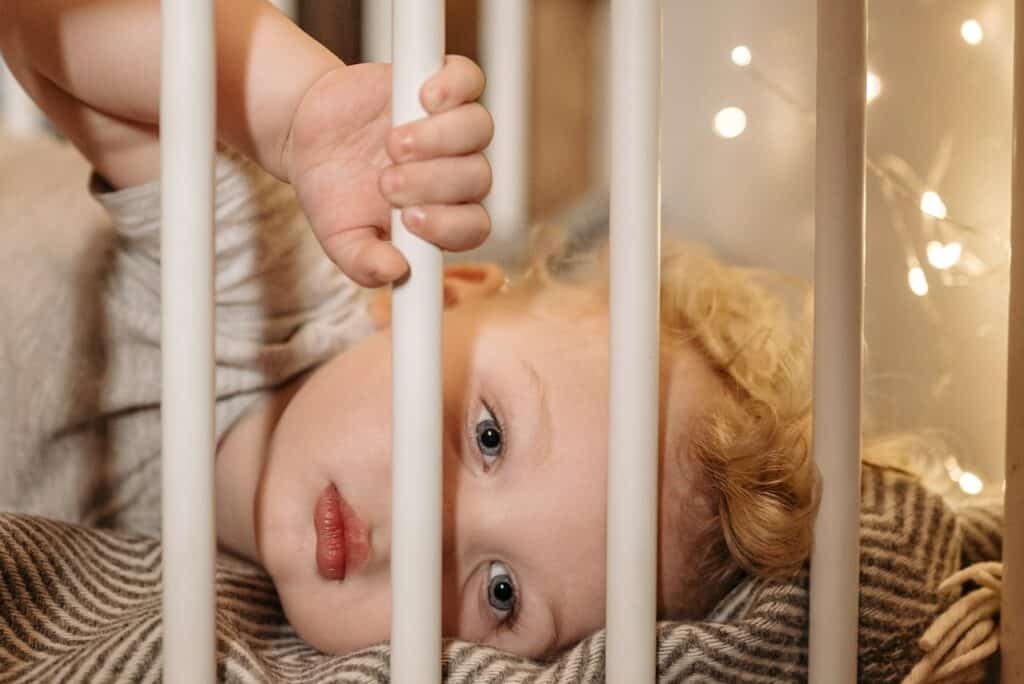
Suffocation can occur when a baby’s face becomes pressed against a soft surface, such as a pillow or blanket. This can lead to a lack of oxygen and potentially result in death. It’s important to keep soft objects out of the crib and to avoid using crib bumpers, which can also pose a suffocation hazard.
Strangulation can occur when a baby’s clothing or body parts become entangled in the crib’s slats or hardware. This can lead to injury or death. To prevent this, parents should ensure that the crib meets current safety standards and that there are no gaps or spaces where a baby’s body parts or clothing can become trapped.
Sudden infant death syndrome (SIDS) is a term used to describe the sudden and unexplained death of an infant under one year of age. While the exact cause of SIDS is unknown, there are steps parents can take to reduce the risk, such as placing the baby on their back to sleep and avoiding soft bedding.
In summary, understanding the risks associated with crib use is crucial for keeping babies safe. By following current safety standards and taking preventative measures, parents can help reduce the risk of suffocation, strangulation, and SIDS.
Importance of Crib Safety
Ensuring the safety of a baby is the top priority of any parent. One of the most important places where a baby spends a significant amount of time is in their crib. Therefore, it is crucial to ensure that the crib is safe and meets all the necessary safety standards.
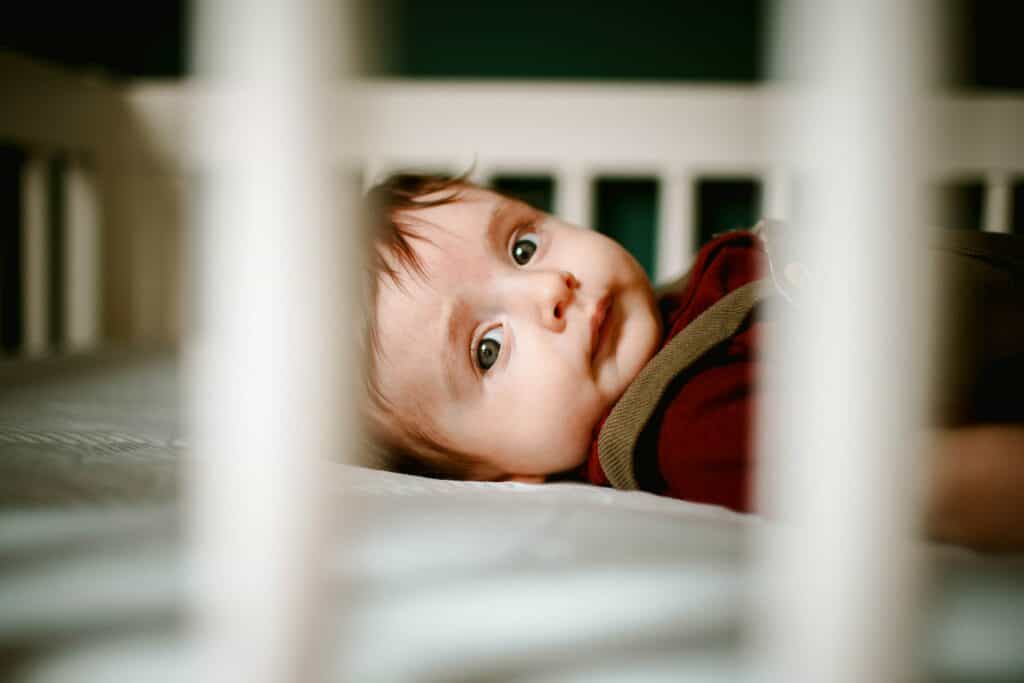
The Consumer Product Safety Commission (CPSC) has set guidelines for crib safety to prevent accidents and injuries. These guidelines cover everything from the size of the crib slats to the materials used in the construction of the crib. It is important to ensure that the crib meets all the safety standards set by the CPSC before purchasing it.
The American Academy of Pediatrics (AAP) recommends that parents use a crib that meets the safety standards set by the CPSC, as well as the standards set by the Juvenile Products Manufacturers Association (JPMA) and the American Society for Testing and Materials (ASTM). These organizations have set standards for crib safety that ensure the safety of the baby.
Parents should also ensure that the crib mattress fits snugly in the crib and that there are no gaps between the mattress and the crib. This will prevent the baby from getting trapped between the mattress and the crib, which can be dangerous.
In conclusion, crib safety is of utmost importance when it comes to the safety of a baby. Parents should ensure that the crib meets all the safety standards set by the CPSC, JPMA, and ASTM. They should also ensure that the mattress fits snugly in the crib and that there are no gaps between the mattress and the crib. By following these guidelines, parents can ensure the safety of their baby while they sleep.
The Role of Beddings and Toys
Beddings and toys play a critical role in ensuring that a baby’s legs do not get stuck in a crib. It is essential to ensure that the bedding and toys used in a baby’s crib are safe and appropriate for their age and development stage.
Blankets, pillows, and soft toys should be avoided in a baby’s crib, especially for infants. Loose bedding can pose a suffocation hazard, and pillows and soft toys can cause breathing difficulties and increase the risk of sudden infant death syndrome (SIDS). Instead, parents should use a fitted sheet and a wearable blanket to keep their baby warm and comfortable.
Stuffed animals and other soft toys should also be kept out of the crib, especially for infants. These toys can become a suffocation hazard if they accidentally cover the baby’s face or if the baby rolls over onto them. Parents can still provide their baby with stuffed animals and soft toys, but they should be kept outside the crib.
It is also important to ensure that the crib mattress fits snugly against the sides of the crib, leaving no gaps where the baby’s legs or arms can become trapped. Additionally, parents should regularly inspect the crib and bedding for any signs of wear or damage that could pose a safety hazard.
In conclusion, parents should be mindful of the bedding and toys they use in their baby’s crib to prevent their legs from getting stuck. By using appropriate bedding and ensuring that the crib is safe and in good condition, parents can provide a safe and comfortable sleeping environment for their baby.
Preventing Limbs from Getting Stuck
One of the most common concerns for parents with infants is the possibility of their baby’s legs getting stuck in the crib. This can be a dangerous situation, and it is important for parents to take steps to prevent it from happening.
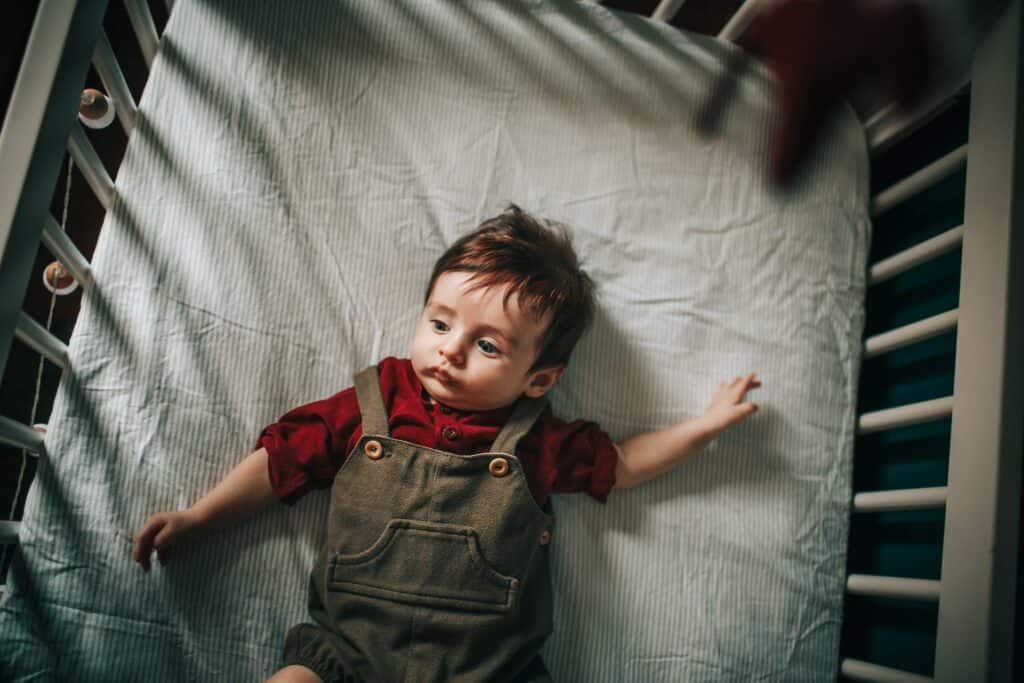
One of the main culprits for limbs getting stuck in the crib are the slats. The distance between the slats should be no more than 2 3/8 inches apart to prevent a baby’s head from getting stuck. The same goes for limbs. If the slats are too far apart, a baby’s leg or arm can slip through and become trapped.
Another way to prevent limbs from getting stuck in the crib is to use a crib rail cover. These covers attach to the top of the crib rail and provide a soft surface for babies to rest their arms and legs on. They also prevent limbs from slipping through the slats.
It is important to note that while crib rail covers can be helpful, they should be used with caution. If they are not securely attached, they can become a hazard themselves. Make sure to follow the manufacturer’s instructions for installation and use.
In addition to using a crib rail cover, parents can also use sleep sacks or wearable blankets instead of traditional blankets. These prevent loose blankets from getting tangled around a baby’s limbs and potentially causing them to become trapped.
Overall, preventing limbs from getting stuck in the crib requires attention to detail and careful consideration of all potential hazards. By following these tips, parents can help ensure their baby’s safety while sleeping in their crib.
Safe Alternatives to Traditional Crib Items
When it comes to keeping babies safe in their cribs, traditional crib items like bumpers and liners are often discouraged due to the risk of suffocation or entrapment. However, there are safe alternatives available that can provide a similar level of comfort and protection without the same risks.
One alternative to crib bumpers is a breathable mesh liner. These liners attach to the crib slats and provide a soft barrier between the baby and the hard crib rails. The mesh design allows for air to flow freely through the crib, reducing the risk of overheating and ensuring that the baby can breathe easily.
Another option is a wearable blanket or sleep sack. These items keep the baby warm and cozy without the need for loose blankets or sheets that can pose a suffocation risk. They also prevent the baby from kicking off blankets and becoming cold during the night.
For parents concerned about their baby climbing out of the crib, a crib tent can be a safe solution. These tents fit securely over the top of the crib and prevent the baby from climbing out, while still allowing for air flow and visibility.
Overall, there are many safe alternatives to traditional crib items that can provide parents with peace of mind while keeping their baby comfortable and secure.
Transitioning to a Toddler Bed
When it’s time to transition from a crib to a toddler bed, parents often worry about their child’s safety. One of the main concerns is preventing the child from climbing out of the bed and falling. Here are some tips to help keep your toddler safe during this transition:
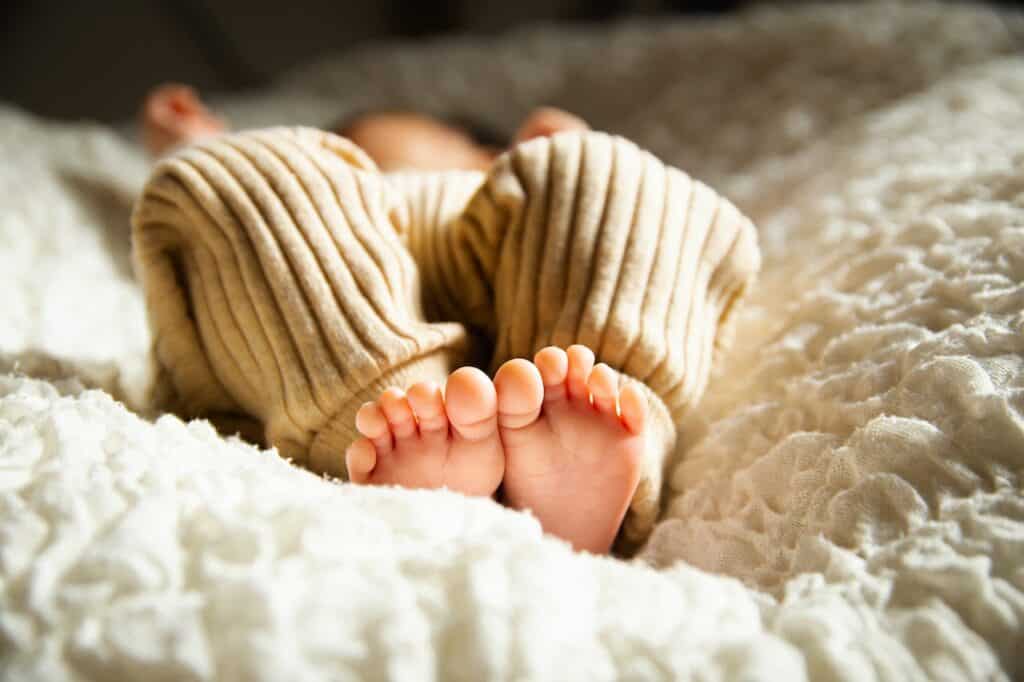
Choose a Safe Toddler Bed
When choosing a toddler bed, make sure it meets safety standards. Look for a bed with guardrails that are at least 5 inches above the mattress. The bed should also have a sturdy frame and be low to the ground to prevent falls.
Teach Your Toddler to Climb Safely
Even with guardrails, toddlers may still try to climb out of bed. Teach your child to climb down safely by showing them how to hold onto the guardrail and lower themselves down to the ground.
Use a Baby Gate
If your child is prone to wandering at night, consider using a baby gate to block off their bedroom door. This will prevent them from leaving their room and potentially getting into unsafe situations.
Be Consistent with Bedtime Routine
Consistency is key when transitioning to a toddler bed. Stick to a bedtime routine to help your child feel secure and comfortable in their new bed. This may include a bath, story time, and a lullaby.
By following these tips, parents can help ensure a safe and successful transition from a crib to a toddler bed.
Additional Safety Recommendations
In addition to the tips mentioned earlier, here are some additional safety recommendations to keep in mind when it comes to crib safety:
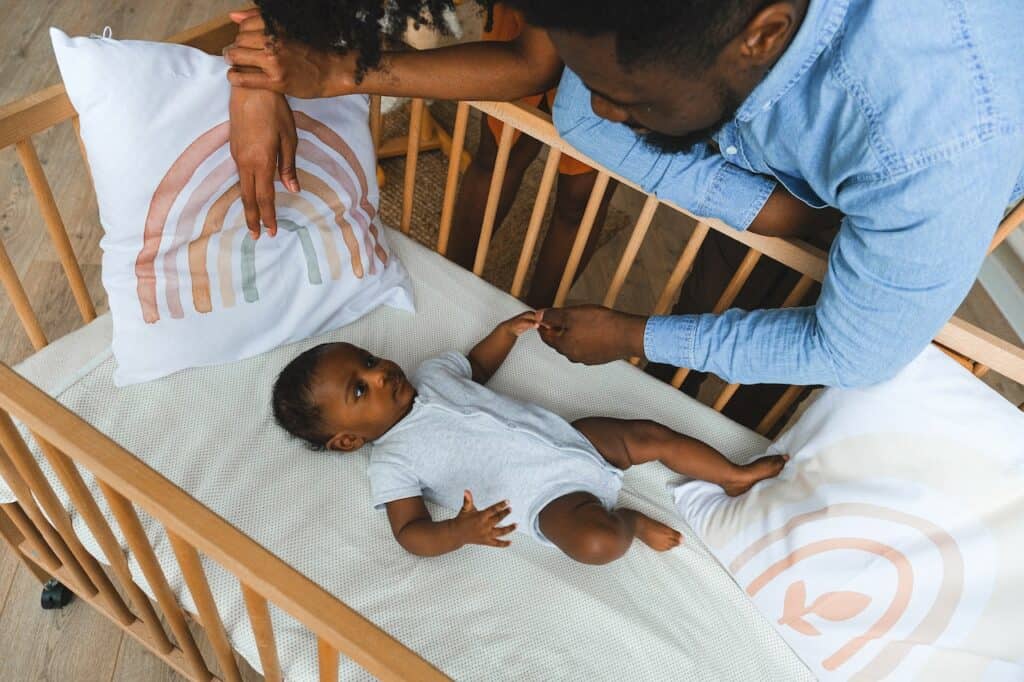
- Avoid using sleep positioners or crib positioners. These devices claim to prevent the baby from rolling over, but they can be dangerous and increase the risk of suffocation. Instead, use a separate flat sleep surface, such as a bassinet or a pack n play, until the baby is old enough to sleep in a crib.
- Make sure the mattress is firm and fits snugly in the crib. This will prevent the baby from getting trapped between the mattress and the crib.
- If you’re using an old family crib, make sure it meets current safety standards. The crib should have no corner posts, and the slats should be no more than 2 3/8 inches apart.
- Always put the baby to sleep on their back, both for naps and at night. This reduces the risk of Sudden Infant Death Syndrome (SIDS).
- Avoid swaddling the baby too tightly, as this can restrict their breathing and movement. Instead, use a sleep sack or a wearable blanket.
- Make sure the baby’s feet are at the foot of the crib, so they can’t wiggle down and get stuck between the mattress and the crib.
- Keep the crib away from any cords or wires, as these can pose a strangulation hazard.
- Never leave the baby unattended on an elevated surface, such as a changing table or a crib with the side rail down.
- If the baby has flailing arms or tends to move around a lot in their sleep, consider using a sleep sack with built-in swaddle wings or a crib netting to keep them in a confined position.
By following these additional safety recommendations, parents can ensure that their baby is sleeping in a safe and secure environment.
Related post: Is a Toddler Mattress the Same as a Crib Mattress
Frequently Asked Questions
How can I prevent my baby’s legs from getting stuck in the crib?
To prevent your baby’s legs from getting stuck in the crib, you can use a few simple strategies. First, make sure that the crib mattress is at the correct height. When your baby is very young, the mattress should be at the highest setting so that they can’t crawl out of the crib. As your baby gets older and more mobile, you can lower the mattress to prevent them from getting their legs caught between the mattress and the crib rails. Additionally, avoid using loose bedding or clothing that could get tangled around your baby’s legs.
What are some alternatives to crib bumpers?
Crib bumpers are not recommended as they can pose a suffocation hazard to babies. Instead, consider using a fitted crib sheet and a breathable baby crib rail cover. These covers can help protect your baby from getting their limbs stuck between the crib rails while still allowing for proper ventilation.
Is it safe to use mesh crib liners?
Mesh crib liners are generally considered safe as they allow for proper air flow and reduce the risk of suffocation. However, it’s important to make sure that the mesh is tightly woven and securely attached to the crib. Loose or poorly attached mesh liners can pose a strangulation hazard.
What is a breathable baby crib rail cover?
A breathable baby crib rail cover is a cover that fits over the crib rails and is designed to prevent babies from getting their limbs stuck between the rails. These covers are made from breathable materials that allow for proper air flow and reduce the risk of suffocation.
How do I protect my baby from crib rails?
To protect your baby from crib rails, consider using a breathable baby crib rail cover or a fitted crib sheet. Additionally, make sure that the crib mattress is at the correct height and avoid using loose bedding or clothing that could get tangled around your baby’s limbs.
What should I do if my baby keeps getting stuck in the corner of the crib?
If your baby keeps getting stuck in the corner of the crib, consider using a breathable baby crib rail cover or a fitted crib sheet. Additionally, you may want to try repositioning your baby in the crib or using a sleep sack to keep them from moving around too much during the night. If the problem persists, consult with your pediatrician or a certified sleep consultant for further guidance.
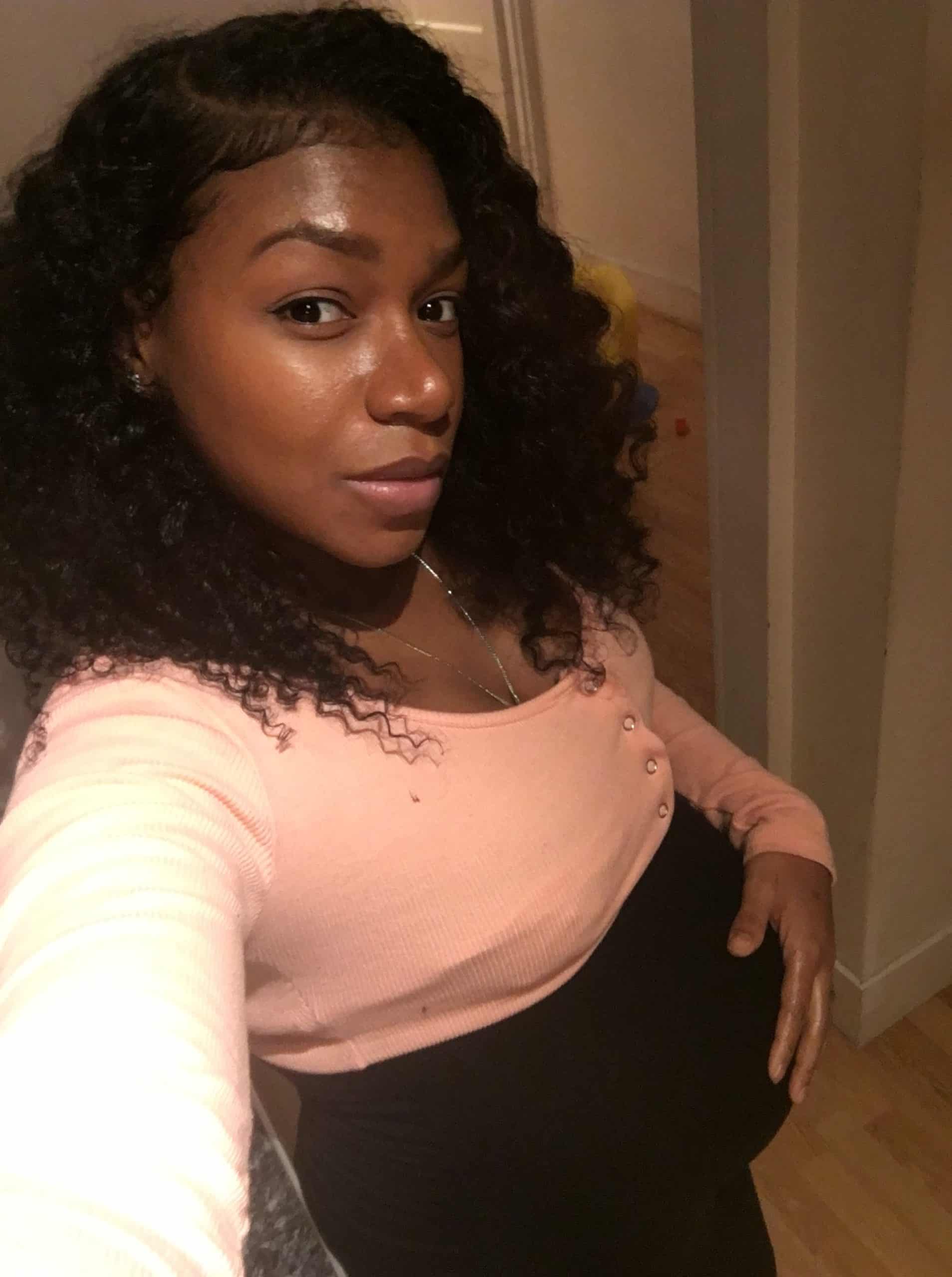
Iesha is a loving mother of 2 beautiful children. She’s an active parent who enjoys indoor and outdoor adventures with her family. Her mission is to share practical and realistic parenting advice to help the parenting community becoming stronger.
